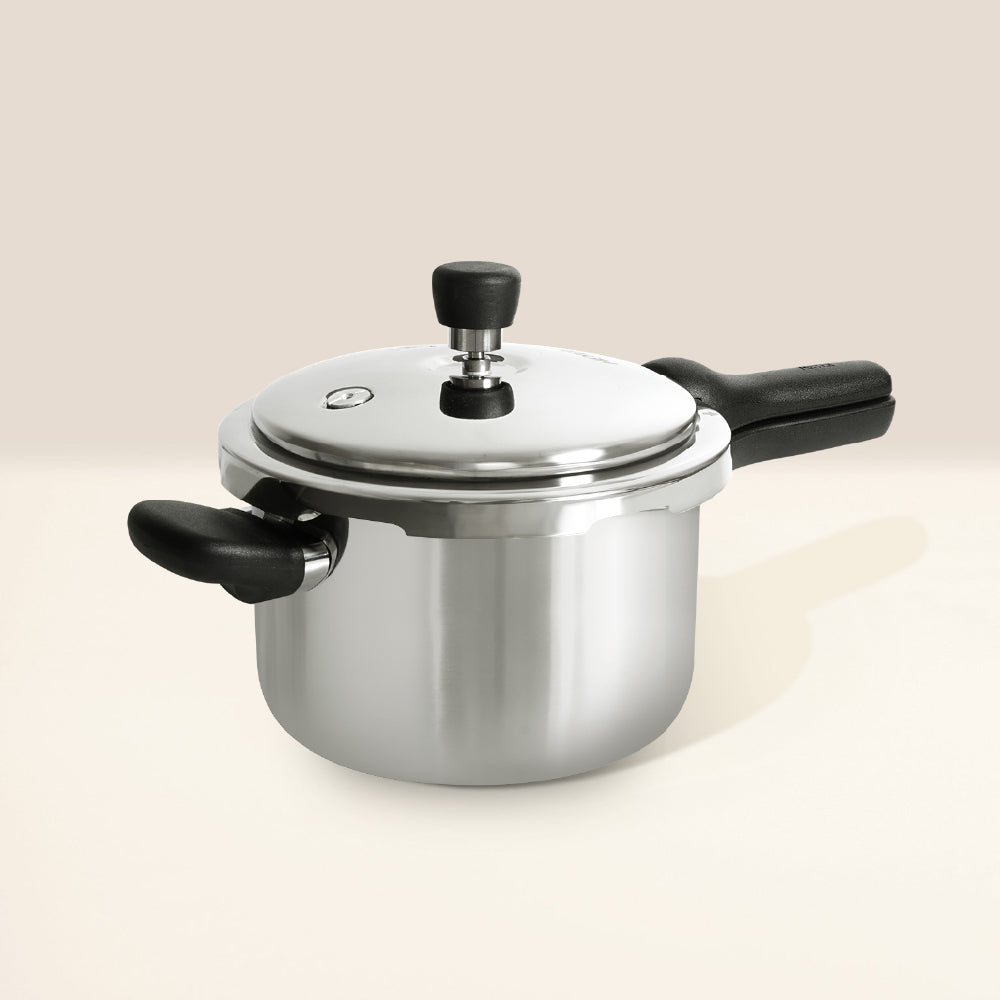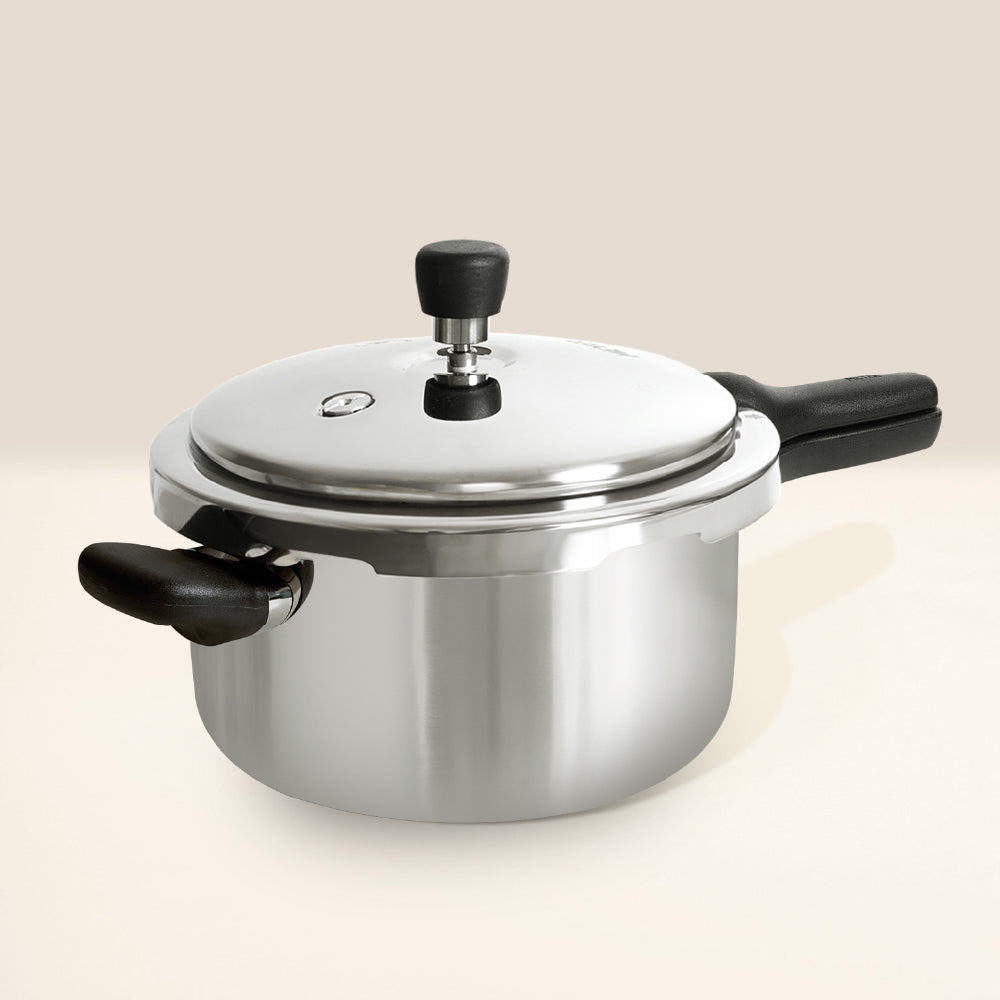Kerala’s culinary treasures are known for their soulful simplicity, and Vattayappam is a shining example. This steamed rice cake, often made during Christian festivals or served as a teatime treat, is loved for its soft, spongy texture and mildly sweet taste. Traditionally steamed in large steamers, Vattayappam can now be easily made at home using your Meyer Presta pressure cooker — delivering perfect results without compromising on tradition.
With its premium triply base, spacious design, and cool-touch handles, Meyer Presta transforms a humble pressure cooker into a powerful steaming companion, making it ideal for recipes like Vattayappam that require gentle, even heat.
Table of Contents
Why Meyer Presta for Vattayappam?
- Triply base construction ensures uniform heating, preventing hotspots that can affect the texture.
- The generously wide base offers enough space to accommodate a deep plate or tin, ideal for steaming.
- Cool-touch, ergonomic handles provide a safe and comfortable grip while handling hot equipment.
- The secure pressure-lock lid allows you to steam without pressure (simply remove the whistle) while maintaining moisture and heat within.
MEYER Presta Tri-ply with Outer Lid Pressure Cooker 3L
Ingredients You'll Need
-
Raw rice (idli rice/parboiled rice) – 1 cup
-
Cooked rice – 2 tbsp
-
Fresh grated coconut – ¾ cup
-
Sugar – ¼ to ½ cup (adjust to preference)
-
Instant yeast – ½ tsp
-
Salt – ¼ tsp
-
Cardamom powder – ½ tsp (optional)
-
Cashews and raisins – for garnish
-
Water – as needed
Step-by-Step Method Using Meyer Presta
1. Soak and Prep
Wash and soak raw rice for 4–5 hours. Drain and add to a blender along with cooked rice and grated coconut. Blend into a smooth, thick batter using minimal water.
2. Ferment
Transfer the batter to a large bowl. Stir in sugar, yeast, and salt. Mix well. Cover and let it ferment for 6–8 hours or overnight, until the batter rises and forms bubbles.
3. Prepare the Pressure Cooker for Steaming
-
Add 1.5–2 cups of water to your Meyer Presta pressure cooker.
-
Place a trivet or ring stand inside.
-
Grease a round steel plate or cake tin that fits inside the cooker. Sprinkle cashews and raisins at the base for added flavor.
-
Pour the fermented batter into the tin — only up to ¾ full to allow space for rising.
Tip: Do not use the rubber gasket or the pressure regulator (whistle). You’re using the cooker as a steamer, not for pressure cooking.
4. Steam Gently
Place the tin inside the Meyer Presta. Close the lid and steam on medium heat for about 20–25 minutes. The triply base ensures even steam circulation and heat retention.
Check doneness by inserting a toothpick or knife—it should come out clean. Turn off the heat and allow the cake to sit for a few minutes with the lid open before removing.
5. Cool, Slice & Enjoy
Once slightly cool, demould the Vattayappam. Slice into wedges and serve with tea or as a light dessert.
A Tradition Reimagined with Meyer Presta
What makes Vattayappam truly special is its delicate, airy texture — something that can be tricky to achieve without the right cookware. Meyer Presta makes it easy. With its premium design and advanced engineering, you’re not just making Vattayappam — you’re crafting a piece of Kerala’s culinary heritage with modern ease and precision.
Whether you're preparing festive treats or simply craving something soft and wholesome, your Meyer Presta pressure cooker is the perfect partner in your kitchen.












Leave a comment